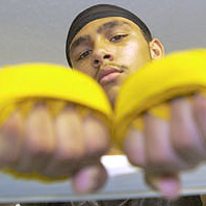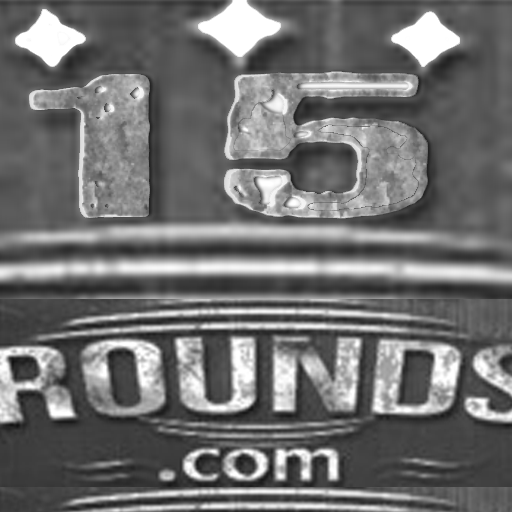By Norm Frauenheim–

Al Haymon’s Premier Boxing Champions (PBC) begins Saturday on NBC in prime time amid anticipation and some skepticism. It’s risky. It’s gutsy. It’s a lot of things. Above all, it’s necessary.
It’s the first step in an attempt to re-create the game after Manny Pacquiao-Floyd Mayweather Jr. on May 2. Pacquiao has already hinted at retirement. With two fights left on his Showtime contract, Mayweather has also talked about the possibility.
It’s only a question of when. Haymon’s PBC series is a business plan, a path for beyond that imminent inevitability. Without one, boxing is left with fighters who have little, if any, name recognition among casual fans.
“There’s been a lot of buzz about this,’’ Al Michaels, the studio host for Saturday night’s telecast, said Wednesday during a conference call with analyst Sugar Ray Leonard, blow-by-blow announcer Marv Albert and executive producer Sam Flood. “…I’m as curious as anybody to see if this provides a resurrection of sorts for a sport that became a pay-per-view sport and didn’t enable a lot of guys to become particularly well known.
“It’s an opportunity for a lot of these fighters to get in the mainstream, and perhaps help to resurrect the sport.’’
Over the last year, the so-called casual fans have been exiting the pay-per-view audience faster than the PPV inflationary rate.
They know two names and two names only: Pacquaio and Mayweather. Ask them if they know Keith Thurman or Robert Guerrero, and you’ll probably get a blank look. The PBC’s introduction is an opportunity to introduce the compelling Thurman and the blue-collar Guerrero to that audience in a welterweight bout on an NBC telecast (8:30 p.m. ET/5:30 p.m. PT) without the PPV price tag.
Thurman and Guerrero might have been buried on a PPV card or premium network if not for a Haymon plan that showcases them, along with Adrien Broner-versus-John Molina Jr. at Las Vegas’ MGM Grand.
Put Thurman-Guerrero on the Mayweather-Pacquaio PPV card and who would really watch? All the attention — all the air in the room — will be consumed by the Mayweather-Pacquiao anticipation.
If you’ve ever been in the arena for a big PPV event, two guys could be engaged in a Fight of the Year. If the main-event stars are entering the arena at the time, however, all eyes are on them, focused on the video-screen that shows their every step from the limo, down the hallway and into the dressing room.
The ongoing drama within the ropes at that moment is overshadowed and quickly forgotten. It’s not fair, but boxing has never been confused with fairness. It’s theater, which means the undercard is little bit like the supporting cast. Nobody pays to see it.
The PBC series is about making stars, successors to Mayweather and Pacquaio. Without them, the game gets pushed even further from the mainstream. Haymon is making a huge investment on the bet that he can. In addition to NBC, he’s got deals with CBS, Spike TV and Bounce TV. There are plenty of platforms, many stages, for his fighters to test their aspirations and for Haymon to turn a profit.
“Without question these young boxers, these future champions, they are totally aware that more eyes will see them than they receive on pay-per-view,’’ said Leonard, the Hall of Famer and the defining face of the welterweight/middleweight heyday of the late 1970s and ‘80s. “The fact of the matter is that they know it’s all about showing up. This is a huge audition for these boxers. ‘’
The NBC card Saturday night has been called a debut. But it’s not. Not really. It’s more of back-to-the future, back to a business model that was a key component in the creation of Leonard. Leonard became a household name because of the 1976 Montreal Olympics, televised by ABC with Howard Cosell at ringside.
“One of the reasons Ray Leonard became an American icon, was because they could see him,’’ Michaels said. “Turn on Channel 7, Channel 4, whatever it was in those years. That’s what I think boxing was then. Obviously, it’s in a different place right now.
“But if it’s going to be resurrected this is one giant step for doing that.’’
The guess here is that Leonard would have become a major star anyway. He was at the right weight. Welter and middle have rich histories. It was also the right time. From 147 to 160 pounds, there were great rivals in Roberto Duran, Thomas Hearns, Marvin Hagler and Wilfredo Benitez.
Free TV’s power to create stars was never more evident than in some of the lightest divisions. Michael Carbajal might be the best example. The Mexican-American from Phoenix fought at a weight, 108 pounds, that had always been ignored. But NBC paid attention to him in 1988, where he was robbed of gold in the second worst theft of the infamous Seoul Olympics. For outrage, nothing rivals the gold robbed from Roy Jones, Jr.
Carbajal emerged from those Olympics with a compelling story, which was a lot more valuable to him and boxing than a silver medal. He was the first from that U.S. Olympic team to win a major title in an afternoon bout televised by NBC, which also signed him to a 3-fight deal in 1990.
Despite being lighter than a lot of jockeys, those NBC cameras made him look much bigger. Imagine what they could do with flyweight Roman Gonzalez, the Nicaraguan who has been fighting in Japan and is an American star only on YouTube.
There’s never been a bigger star at 108 pounds than Carbajal. Without NBC, would the Hall of Famer been known as a major, pound-for-pound star? Dumb question.
Then again, there’s never been a long-term commitment to boxing on traditional, free-TV networks since then. For Haymon’s PBC, NBC is a beginning, complemented by social media, state-of-the-art technology and big-name broadcasters. But it’s an old model — proven, updated and maybe back at ringside just in time.











